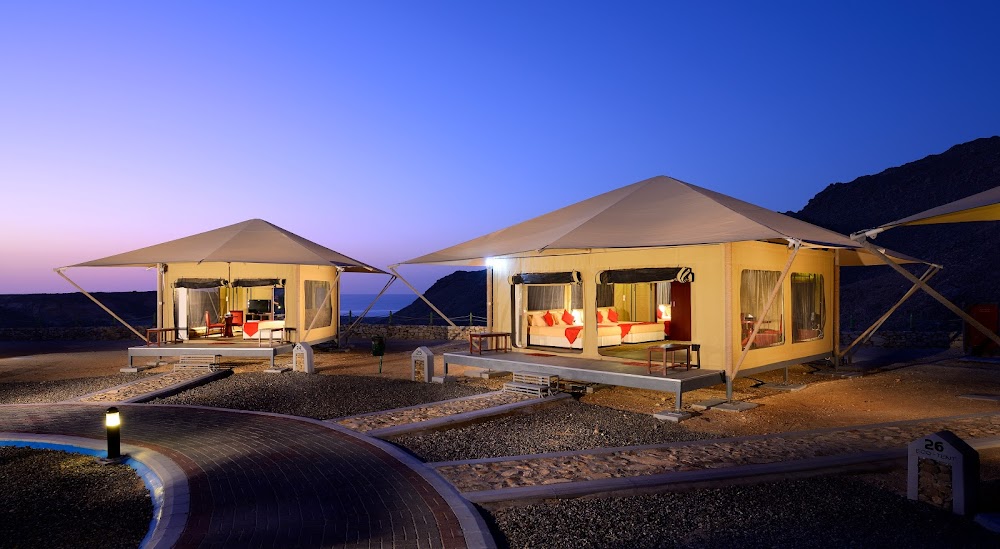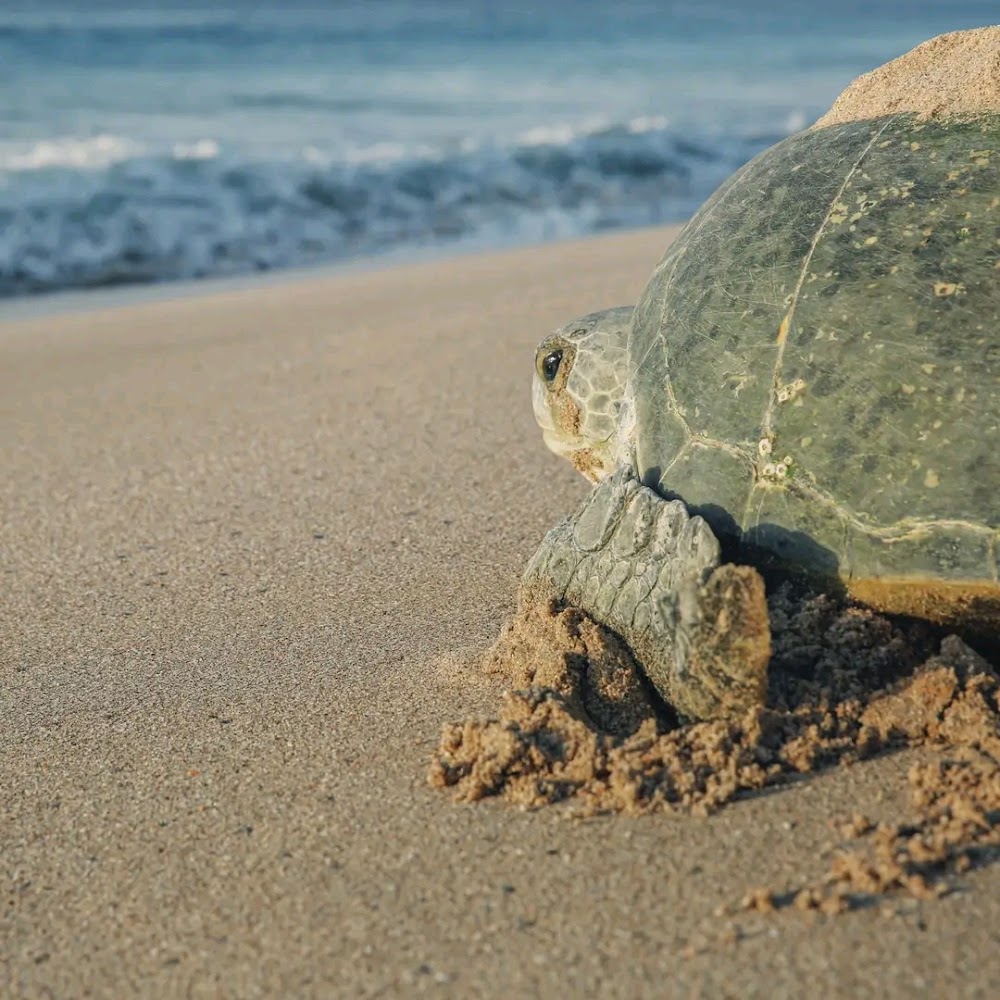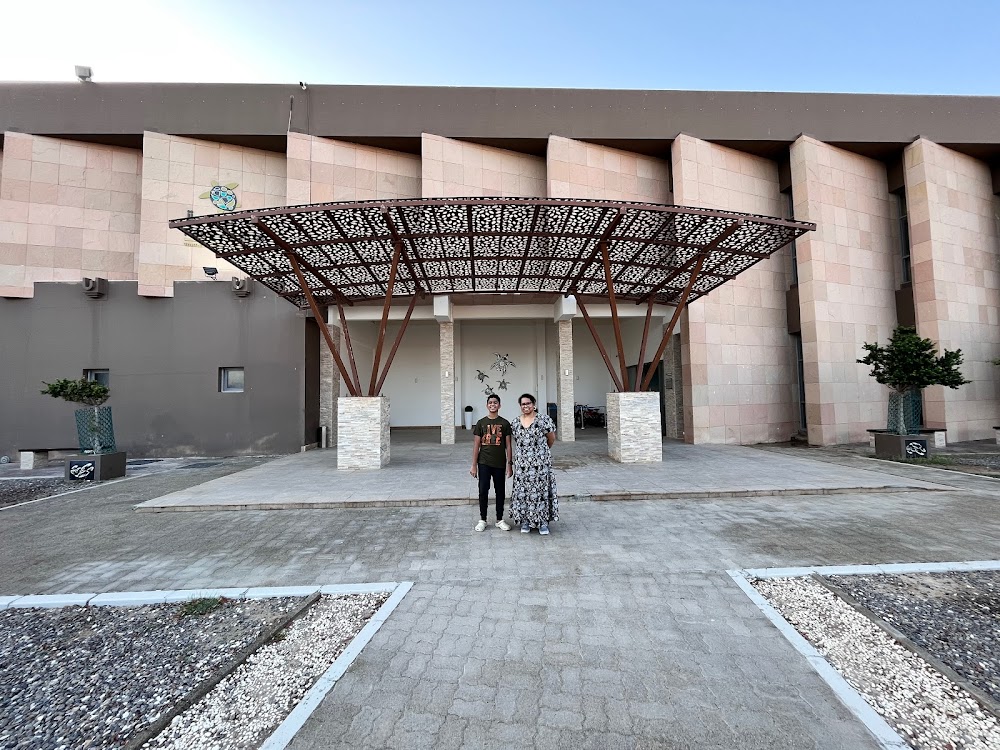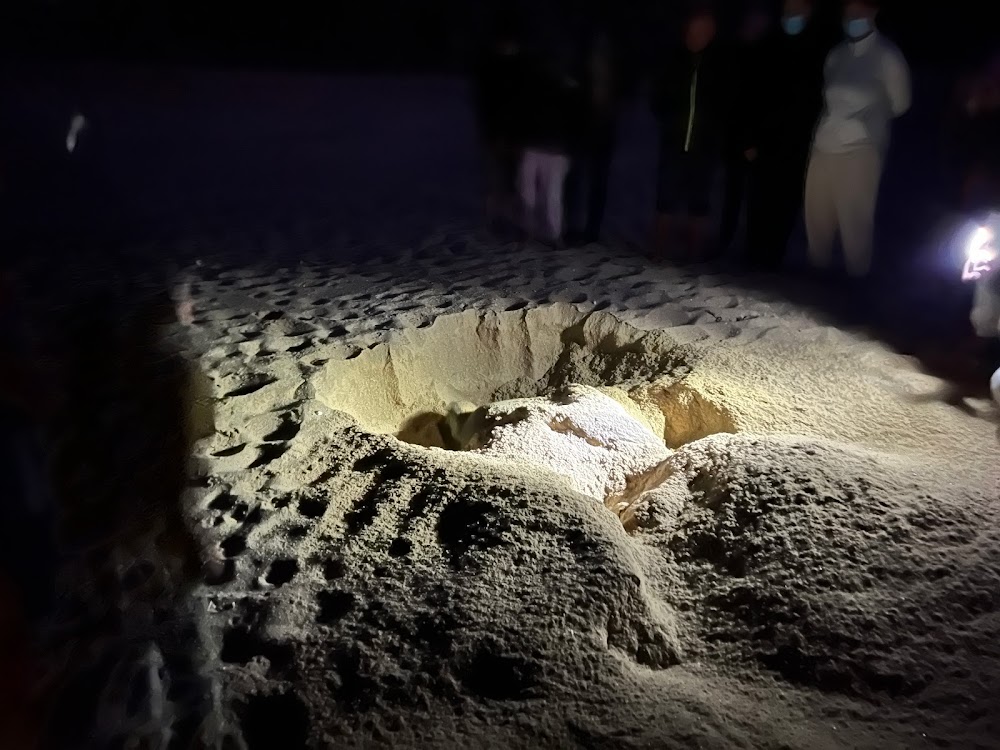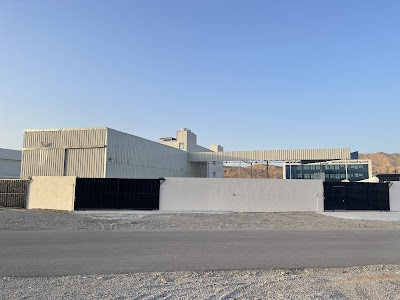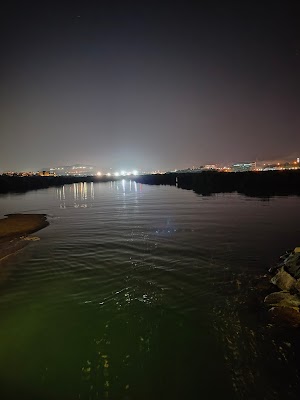Ras al Jinz Turtle Reserve (محمية رأس الجنز للسلاحف)
Overview
Ras Al Jinz Turtle Reserve: A Sanctuary for Green Turtles
Nestled in the breathtaking Ash Sharqiyah South region of Oman, the Ras Al Jinz Turtle Reserve is a shining example of environmental conservation and a must-visit destination for nature enthusiasts. This remarkable reserve is renowned as one of the world's most significant nesting grounds for the endangered green turtle, developed with the thoughtful aim of protecting both the turtles and their pristine habitat.
The Origins of Conservation
The journey of the Ras Al Jinz Turtle Reserve began in the early 2000s when the Omani government recognized the urgent need to safeguard these magnificent creatures' nesting grounds. Collaborating with environmental organizations and marine biologists, they set out to create a sanctuary that would not only provide a safe haven for the turtles but also allow visitors to witness one of nature's most extraordinary spectacles.
Eco-Friendly Development
The construction of the reserve was meticulously planned to minimize environmental impact on the fragile coastal ecosystem. Local and international experts were engaged to ensure that the design was eco-friendly and sustainable. A visitor center, built with locally sourced materials, was established to blend seamlessly with the natural surroundings. This center serves as the heart of the reserve, offering educational exhibits that detail the turtles' life cycle, migration patterns, and the critical importance of conservation efforts.
Visitor Experience and Conservation
Facilities at the reserve were designed with both turtles and visitors in mind. Boardwalks and designated viewing areas provide unobstructed views of the nesting sites while ensuring that human presence remains respectful and non-intrusive. To maintain a serene environment, strict guidelines limit the number of visitors allowed on the beach at any given time, creating a peaceful atmosphere for both turtles and guests alike.
Community Involvement
A key component of the reserve's development has been the training and engagement of the local community. Residents of Ash Sharqiyah South have been employed and trained as tour guides and wardens, fostering a sense of ownership and responsibility for their natural heritage. This initiative not only supports the local economy but also deepens the community's appreciation for environmental conservation.
Ongoing Research and Monitoring
In addition to its infrastructure, the success of the Ras Al Jinz Turtle Reserve is bolstered by ongoing research and monitoring efforts. Marine biologists conduct regular studies to gather vital data on turtle populations, nesting behaviors, and the threats these creatures face. This information informs targeted conservation measures, such as protecting nests from predators and addressing the impacts of climate change.
Hatchery Program Success
A significant achievement of the reserve is the establishment of a hatchery program. This initiative involves carefully relocating vulnerable nests to a protected area where they can be monitored until the hatchlings are ready to embark on their journey to the sea. This program has notably increased the survival rate of young turtles, offering hope for the future of the species.
A Model for Ecotourism
The Ras Al Jinz Turtle Reserve has become a benchmark for ecotourism and conservation efforts around the globe. Each year, thousands of visitors are drawn to witness the awe-inspiring sight of turtles nesting on the beach. Guided night tours present a unique opportunity to observe turtles laying eggs and hatchlings making their way to the ocean—a truly mesmerizing experience that leaves an indelible impact on all who are fortunate enough to witness it.
Legacy of Conservation
The success of the Ras Al Jinz Turtle Reserve stands as a testament to the power of collaboration, sustainable practices, and community involvement. By protecting these ancient mariners and their habitat, Oman has created a legacy of conservation that will inspire future generations and ensure the survival of these majestic creatures for years to come.


